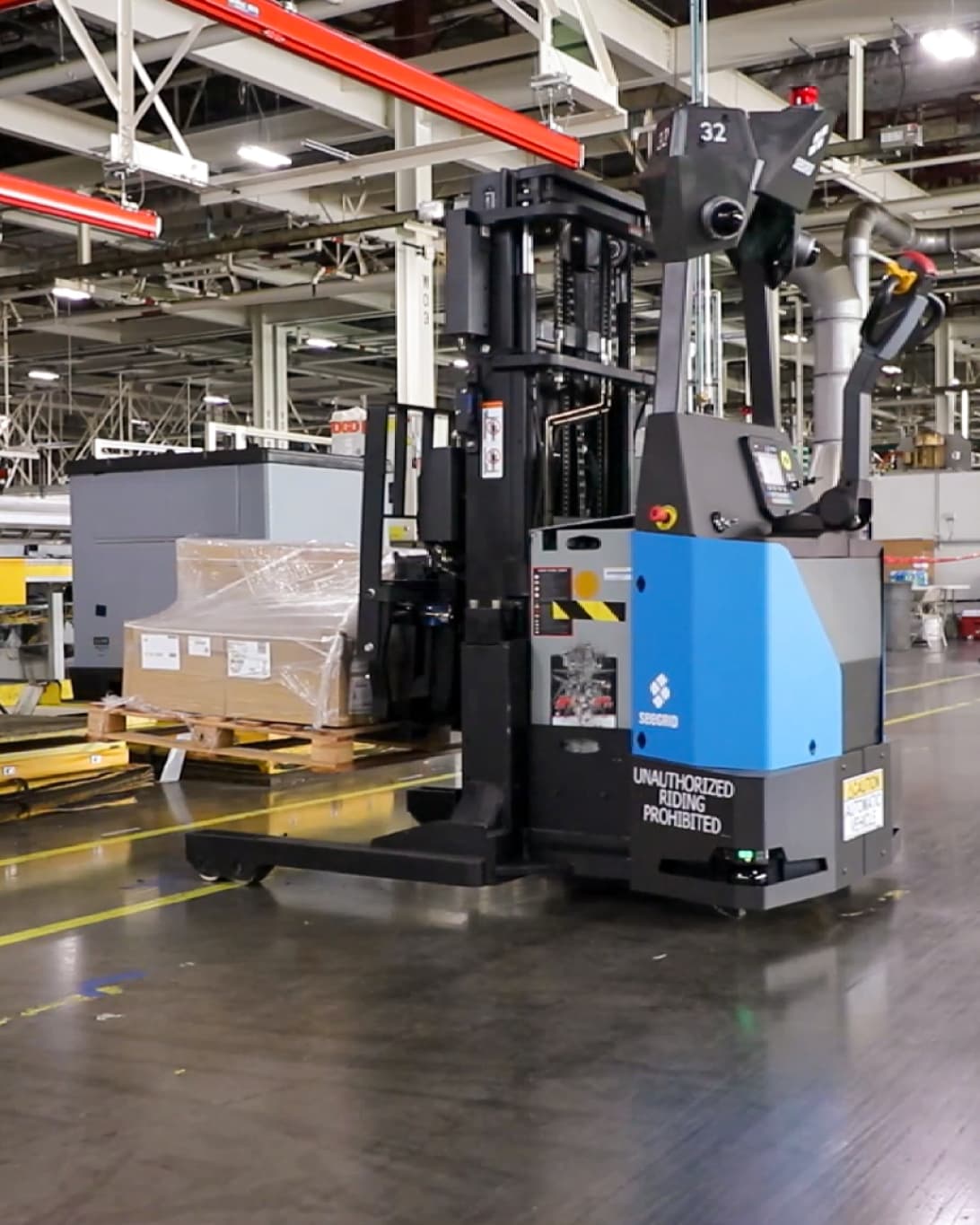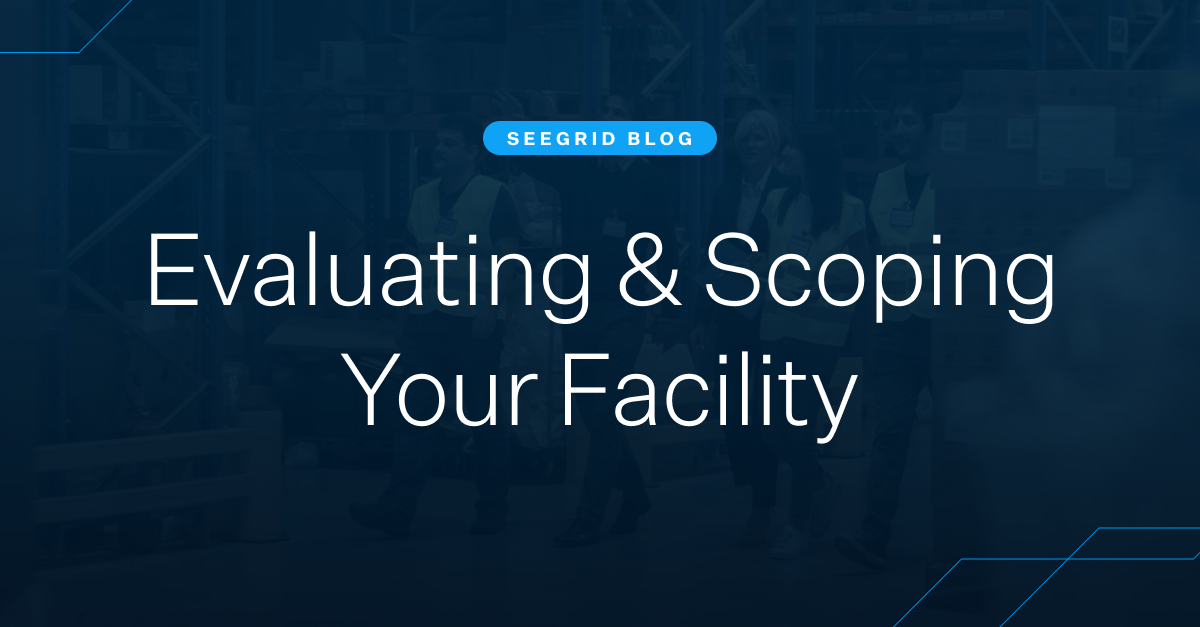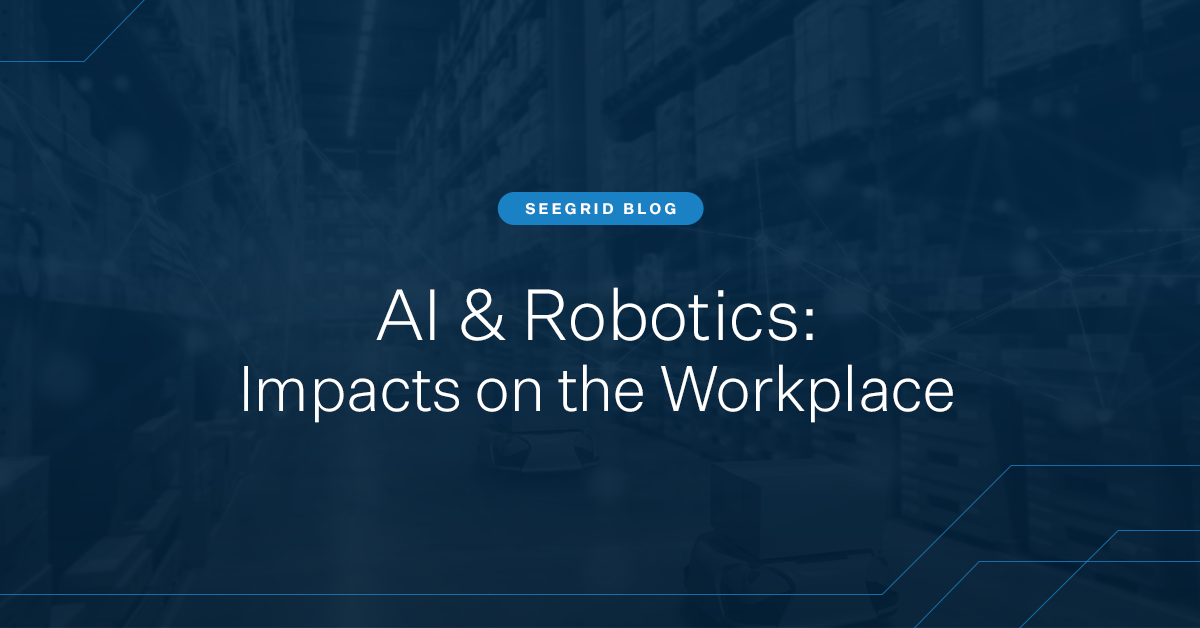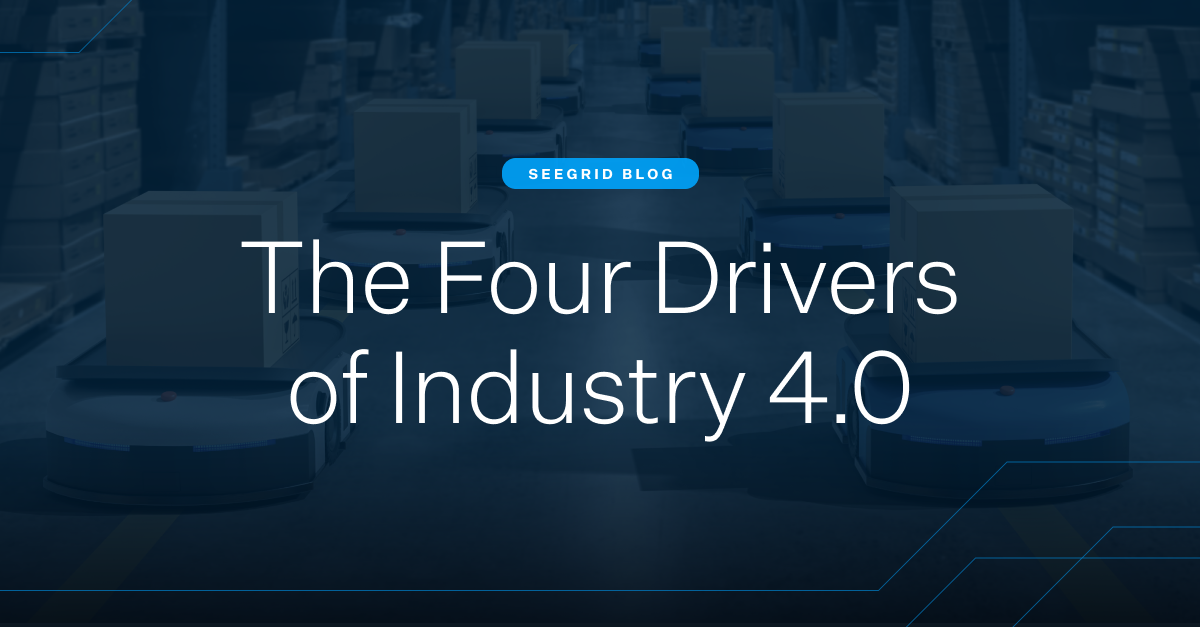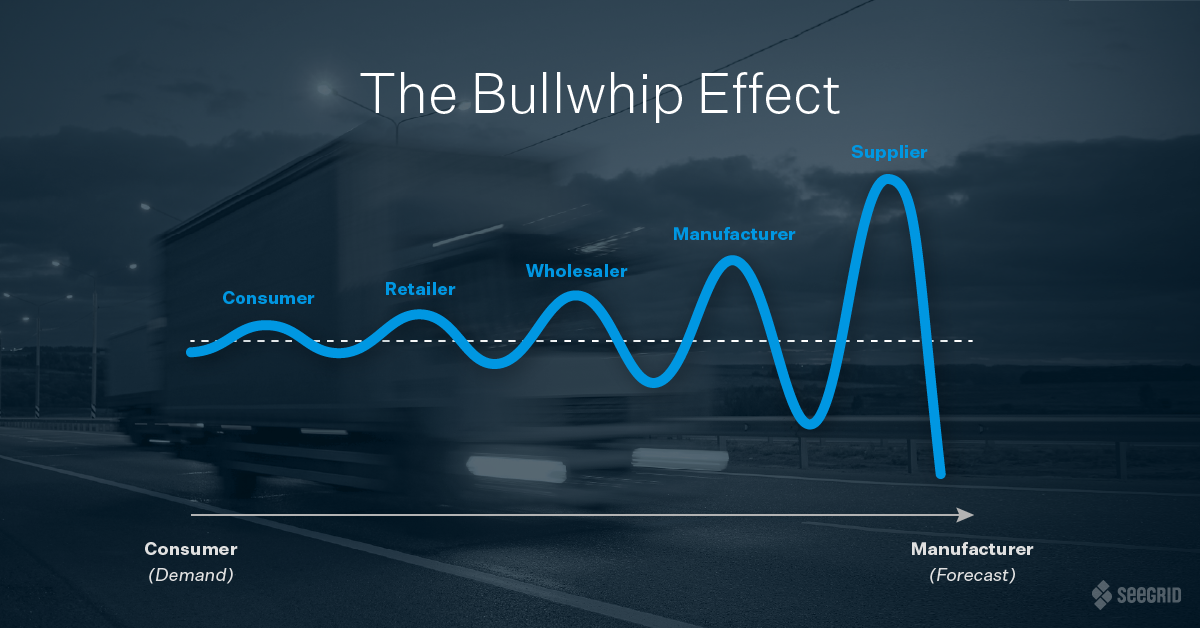Today, Seegrid introduced the Seegrid Palion Lift AMR, further expanding the capabilities of our fleet of mobile robotics solutions. We sat down with Seegrid Director of Application Engineering August Drake to discuss the facility scoping and evaluation process which enables companies to maximize the value of their automation investment.
Before investing in an automation solution, it is important that your vendor takes the time to understand the current workflows as well as potential opportunities for improvement. Autonomous mobile robot providers that have a complete understanding of your facility and processes will be able to deliver the most effective solution to achieve your automation goals in becoming safer, more productive, and profitable.
However, not all robotic automation solutions are created equal. There are various automation technologies and approaches for different processes in the market today, and the level of support to ensure customer success can significantly vary. How do you ensure that you are investing in the right solution that allows you to get up and running quickly, achieve your goals, and continue to improve over time? It comes down to the initial planning and scoping.
In this article, we ask an industry expert for insights into the scoping and planning process for companies evaluating autonomous material handling solutions. August Drake, Seegrid’s Director of Application Engineering, leads a team of industrial engineers and material handling automation experts, and is closely involved in strategizing, designing, and implementing automation solutions across Seegrid's customer base. August and her team combine industrial, manufacturing, and engineering backgrounds with extensive experience in autonomous materials movement operations, working with some of the world’s largest leading brands.
In this “5 Questions Answered” segment, we turn to August Drake to explain how companies can ensure successful implementation, adoption, and continuous improvement for boosted throughput productivity and safety by partnering with a vendor who offers facility scoping and consultation services.
What is a facility scope for automation?
August Drake: Before investing in an automation solution, you should first work with a vendor to understand your current processes, problems, and also your potential possibilities. Seegrid has an expert team of industrial engineers dedicated to working collaboratively with customers to create use-case design concepts and ROI analyses specific to a customer’s facility.
An automation scope of work is the output of your automation project analysis, completed by Seegrid industrial engineers. Our team of material handling automation experts work with you to complete the scope, specific to your business, after visiting your facility, reviewing data and layouts, and creating a solution to automating the manual processes in place today, as well as considerations for the future. As a result of being directly involved from the start, we can better understand the customer’s goals while providing solutions that maximize the capabilities of our technology for continuous improvement and maximum productivity.
The scope of work takes a deep dive into a wide range of information, including how processes work today, how the processes will work tomorrow, where and how autonomous mobile robots (AMRs) will function along a route, labor reallocation potential, and the amount of Palion AMRs needed based on the customer’s throughput volume and goals.
What is involved in a facility scope for AMRs? Is there an additional cost for this evaluation?
August Drake: We take a holistic, consultative approach to automation project planning, and share our best practices from working with some of the world’s largest brands in manufacturing, warehousing, and logistics. During consultation, our objective is to fully understand why the operation was set up a certain way and what needs to happen within processes to ensure we offer a strong recommendation for automation.
To get started, Seegrid representatives help the customer complete a prequalification checklist. This checklist captures details about the current workflows and environment involved in the processes that the customer is interested in automating. Details can include topics such as load types, how this customer is currently moving the payloads, and current travel paths. Once completed, we review and through an open dialogue, gain further understanding of the ins and outs of the process, including details about the human workers involved in the workflow, communication processes, management systems, facility layout, and overall flow.
The next step in the process includes compiling the information and drafting routes which we review on-site in the facility. Our experts walk the site to further understand the operational goals, asking questions to the people involved in the processes. While on-site at the facility, our team will also confirm measurements and other key details about the facility layout, traffic patterns, loads, and functional areas to ensure an accurate and effective scope of work.
The scoping process we conduct is extremely collaborative and provided at no additional cost. Many autonomous mobile robot companies and automation vendors charge for this type of service or require you to bring in a third party. Our potential customers have a higher degree of success with automation because of Seegrid’s structured consultative approach; with expert personnel dedicated to this crucial scoping and evaluation process, our teams have deep levels of understanding to ensure successful outcomes. This is why Seegrid includes facility scoping as part of our standard services for customers and prospective customers, free of charge. We are committed to ensuring the success of our customers, and thorough evaluation planning is a crucial step to this success.
Why is it important to work with an AMR vendor who offers scoping and consultation services?
August Drake: Something that many may not realize is that change management starts before you buy an automation solution, whether it is AMR technology, an infrastructure-based AGV system, or any other automation solution. If you don’t fully understand what you are buying or if it’s going to be conducive to your operations and processes, you are putting yourself at risk to struggle with adoption and change management, losing out on realizing the return on your investment.
We gain insights from the people who best represent the day-to-day operations and understand the upstream and downstream processes within the workflows. Acceptance of technology accelerates when employees and site level leadership have involvement and awareness from the start. When employees feel comfortable and effectively collaborate with the automation technology, the rate of adoption and attaining a return on investment accelerates.
Seegrid’s full-service model makes sure that users are confident in working with the solution. Seegrid provides a holistic solution—not just commodities or robots—before you even decide to purchase.
Every step of the customer experience is managed by Seegrid’s internal team of professionals. We continue to build upon the foundation and understanding that was established while creating the scope, which ultimately expedites the overall rate to value. Because our team already has a full understanding of the facility components, our implementation team can have AMRs programmed, routes designed, and employee training conducted, with AMRs implemented in two weeks or less.
Ensuring quality and a commitment to superior service throughout the customer lifecycle is foundational to Seegrid's core mission. From the initial consultation to application scope, to implementation and training, to ongoing support, our approach helps customers realize the full potential and value of the complete Seegrid solution. Our dedicated resources help customers get up and running quickly and effectively to accomplish their objectives today and beyond.
What should I have evaluated first? Should I have a specific workflow scoped or my entire facility?
August Drake: The benefit of having a vendor conduct a full evaluation of the facility instead of a specific workflow, is that we can work with you to ensure that you are starting with the right workflows for your automation project. Your operational teams have insight into what happens daily, but they may not understand how automation will affect these processes.
A facility scope also opens the door to integrated processes, where multiple processes are automated and flow into one another for maximum efficiency. A customer can get started with just one workflow, but the facility evaluation will help a customer understand where to start and how to prioritize workflows by building an automation roadmap.
What are the benefits of having a facility scope conducted for my automation project?
August Drake: With a Seegrid facility scope, all the planning work is done for you. We simply ask for a few hours on-site at the facility to understand the processes, and we design the solutions, explaining how everything works together. Seegrid operates as an extension of your team, staffed and ready to assist throughout all stages of the customer journey. Through our scoping process, we ensure that you have all the information you need to prove what you need to accomplish. This includes a full business case that captures the plan and data needed to showcase the value of your automation project, including potential labor savings and the number of Palion AMRs you need to accomplish throughput goals.
The advantage of our approach is that we deliver high quality, end-to-end service coverage that results in a positive customer experience and rapid technology adoption. We understand the impact of successful automation planning. Seegrid provides the expert knowledge and support needed to maximize the value of your investment.
